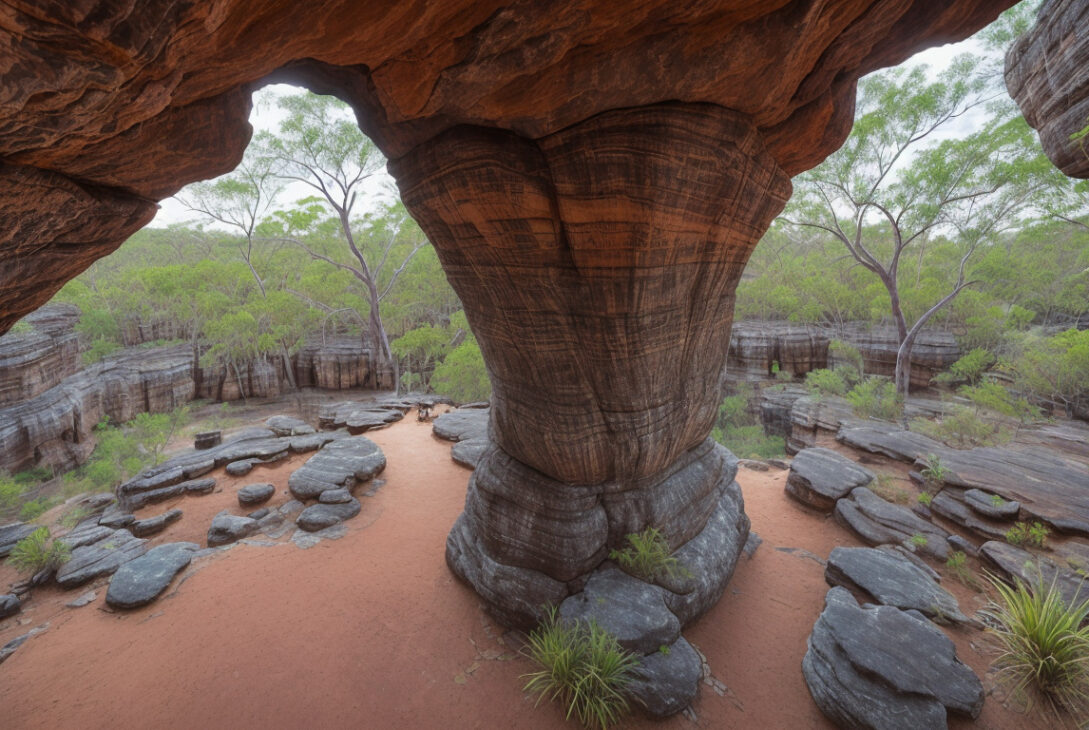‘Those paintings belong to us’: An Indigenous-led initiative uses technology to safeguard Kakadu’s rock art
Kakadu National Park, Australia — Since its inscription on the UNESCO World Heritage List in 1981, Kakadu National Park has been celebrated as one of Australia’s most treasured cultural landscapes. Among its many wonders, the rock art at Ubirr holds particular significance, drawing hundreds of thousands of visitors annually, mainly during the dry season. These ancient paintings, known locally as gunwardebim in the Kunwinjku language, encapsulate stories and cultural heritage that span back at least 18,000 years.
However, growing tourism combined with accelerated climate change poses mounting threats to these invaluable artworks. In response, a pioneering Indigenous-led project has emerged to protect and preserve Kakadu’s rock art using innovative technological methods grounded in Indigenous knowledge and cultural values.
Rock art: A living cultural legacy
The Ubirr site contains thousands of rock paintings that record diverse aspects of Aboriginal history and spirituality. The artworks depict everything from extinct megafauna to encounters with European settlers, forming a continuous narrative that intertwines ancient and contemporary Aboriginal life. For the Traditional Owners, especially the Bininj people (the Kunwinjku term for Aboriginal people), these paintings are more than just artefacts; they are living embodiments of spiritual beliefs and cultural law, transmitted orally across generations.
Senior Erre Traditional Owner Alfred Nayinggul emphasizes the deep sense of custodianship: “Yes, [Ubirr] is a place with many rock paintings. And the tourists all go there to see them… But long ago, our ancestors lived there. And so those paintings belong to us. We care for those paintings.”
Threats to cultural heritage
Despite their cultural importance, Ubirr’s rock art faces increasing risks. Tourist activities sometimes stray beyond designated paths, resulting in litter, and occasionally, vandalism of sacred sites. Moreover, seasonal environmental threats exacerbate the vulnerability of the art. Powerful wet season cyclones inundate sites with water, while hot wildfires during the late dry season can degrade the sandstone surfaces and fragile pigments that preserve the images.
An Indigenous-led conservation management plan
In 2019, prompted by Alfred Nayinggul and other Traditional Owners, a collaborative effort began to develop a culturally grounded conservation management plan for Ubirr. Researchers from four Australian universities partnered with Bininj knowledge holders, Njanjma Aboriginal rangers, and Kakadu National Park staff to co-design a plan tailored to the cultural and environmental specificities of the site.
The project formally commenced in March 2021 with an on-Country workshop where senior Traditional Knowledge holders from the Bunitj and Manilakarr clans, alongside rangers and researchers, identified priorities, concerns, and strategies for protecting Ubirr’s cultural heritage.
Cultural values mapping: Beyond physical features
A central methodology to the project is “cultural values mapping”, which diverges from conventional mapping by documenting intangible cultural elements — stories, spiritual relationships, and the nuanced significance Traditional Owners attach to specific locations.
In practice, Traditional Owners worked on large satellite images, overlaying transparent sheets to build layered cultural information. They mapped sacred sites, traditional living areas, resource zones, and places under threat from tourism, fire, and environmental change. This approach generated multiple spatial knowledge banks that enrich understanding of the landscape beyond physical geography.
The cultural maps, recorded in Kunwinjku and English, now underpin targeted heritage management strategies for Ubirr. Oral histories captured in a short film further reinforce the site’s importance to the Bininj people.
Technology meets tradition: 3D modelling and immersive environments
Fieldwork led by female Daluk rangers from the East Alligator team documented the rock art and site conditions, creating a comprehensive photographic baseline. These records support annual monitoring by Kakadu park rangers.
Embracing cutting-edge technology, the team constructed detailed 3D models of key rock art sites using photogrammetry. To avoid reducing cultural sites to mere data points, project members incorporated the 3D data into an interactive environment built with Unreal Engine 5 gaming software. This immersive digital representation integrates water flow, weather patterns, vegetation, and soundscapes to reflect the living context of the Kakadu wetlands.
This virtual reconception enables Traditional Custodians who cannot visit the country frequently to engage deeply with their heritage, sustaining cultural connections in new, accessible ways.
A blueprint for respectful digital heritage conservation
The Indigenous-led conservation approach in Kakadu illustrates how mainstream digital tools can be adapted respectfully to Indigenous protocols and worldviews while retaining scientific robustness. This model offers a scalable framework for managing cultural heritage across other Indigenous Protected Areas and national parks.
By centering Indigenous voices and knowledge, this project contributes to the emerging field of culturally sensitive digital heritage management, fostering a future where technology serves not just conservation goals but cultural sovereignty and self-determination.
This article is based on research collaboratively conducted by Tristen Anne Norrie Jones (University of Sydney), Alfred Nayinggul (Senior Erre Traditional Owner), and Sam Provost (Australian National University), and published in the International Journal of Heritage Studies. The project received funding support from the Australian Research Council, the Department of Industry, Science and Resources, the Rock Art Australia Foundation, and others.
For further reading, see: https://theconversation.com/those-paintings-belong-to-us-how-an-indigenous-led-project-is-harnessing-technology-to-protect-kakadus-rock-art-263274










